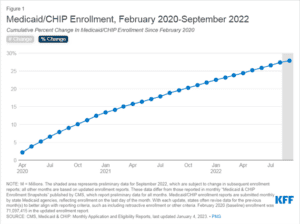The next-generation core administrative processing system (CAPS) from HealthEdge, HealthRules® Payer, delivers transformational capabilities that allow health plans to compete more effectively and adapt faster to changing business models, market needs, and regulatory dynamics. The system’s powerful flexibility allows for an endless variety of configurations that can be designed to meet the dynamic needs of virtually any health plan and any line of business.
To help HealthRules Payer customers optimize system configurations and ensure further optimized business performance, the HealthEdge Global Professional Services team offers specialized services for HealthRules Payer configuration. Both new and existing customers can leverage our expert team complemented by an optimized mix of global resources, when appropriate, to accelerate the time-to-value during new implementations or system expansions into new lines of business or geographies.
Overcoming Industry Challenges
- Workforce shortages on both the IT and business fronts make it challenging for some health plans to move at the pace required to remain competitive in today’s rapidly changing market. HealthRules Payer experts ensure health plans have the resources they need when they need them to adapt and meet their ever-changing landscape.
- Technology innovations and new features are constantly being made available by HealthEdge and its partners. The Professional Services team of experts helps customers quickly embrace and implement these advancements to gain competitive advantage and optimize efficiencies.
- As health plans grow, so does the complexity of the systems that support the growth. HealthEdge experts help health plans identify new ways HealthRules Payer can enable, accelerate growth strategies, and support peak performance of both the system and the organization.
Unmatched Expertise in the Industry
HealthEdge Configuration as a Service is powered by the healthcare innovation experts at HealthEdge. The combination of HealthEdge’s technology, strategic leadership, best practices, and its experienced configuration teams and optimized U.S./global resource model, ensure health plans can achieve their goals in a timely and cost-effective manner.
- In-depth knowledge of the HealthRules Payer solution capabilities and architecture
- Expertise gained through hundreds of HealthRules Payer implementations
- Instant connections to HealthRules Payer software architects and developers
For projects where it is appropriate, additional resources can be sourced from global locations, giving payers extreme flexibility and cost savings while benefiting from workforces in multiple time zones that expedite time-to-value. A key attribute of these services is our ability to dynamically flex to a hybrid model of onshore and global resources to best support the project’s requirements, timeline, and budget while maximizing both quality and timeliness.
Health Plan Configuration as a Service
HealthRules Payer configuration often drives the cost and timeline of implementations, upgrades, expansions, or support projects. As a result, health plans may reduce the scope, preventing the organization from realizing the full possibilities of their CAPS system. Configuration as a Service provides expert resources and services to enable health plans to reduce delivery risk, increase quality, and maximize the cost-efficiency of projects associated with implementing, maintaining, and expanding the use of HealthRules Payer.
Configuration as a Service Features:
- Implementation services
- Line of business expansions
- New services
- Expanded capabilities
- Upgrades
- Migrations
- Other growth needs
Health Plan Benefits
Providing deep HealthRules Payer expertise in a cost-effective model, the Configuration as a Service delivers powerful assurances:
- Successful configuration through a standardized, scalable, & mature process framework
- Minimize costs through strategically optimizing resources
- Shorten delivery times for implementations, upgrades, and line of business expansions
- Reduce risks associated with implementations and system expansion
- Improve outcomes to ensure health plans optimize HealthRules Payer functionality
To learn more about how HealthEdge Configuration as a Service can deliver predictable, cost-effective services for your organization, please reach out to your HealthEdge representative or email [email protected].



